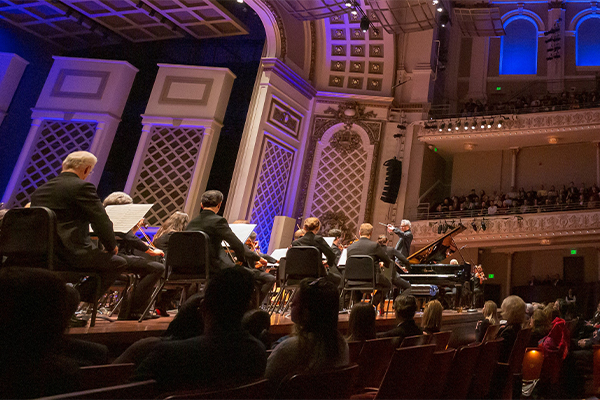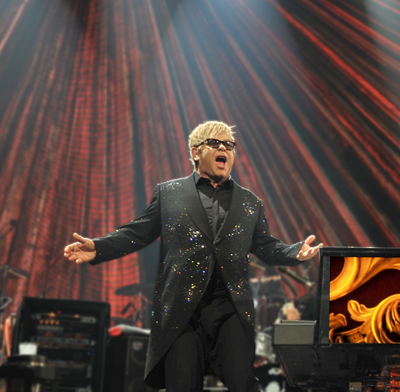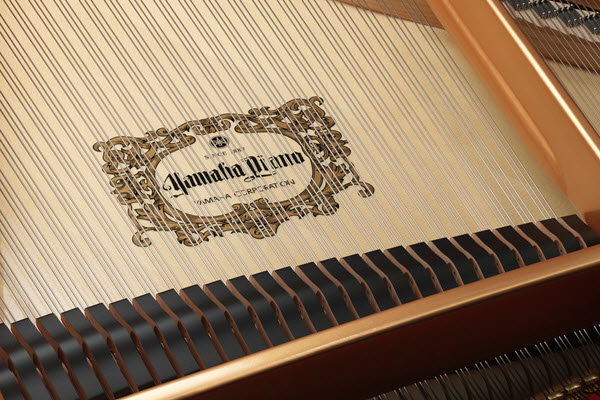Dawn Chorus: Augmented Reality With a Disklavier
A conversation with the artist behind the concept.
A piano is much more than the notes it plays. By some combination of its beauty, resonance, weight and presence in a room, a real piano can deliver a sensory experience that a recording just cannot match.
Sarah Meyohas, a conceptual artist based in New York City, explores this concept and more in her latest art piece “Dawn Chorus,” where she uses a self-playing Yamaha Disklavier piano as the centerpiece, in combination with interactive augmented-reality (AR) visuals set to music. Viewers wearing an AR headset see a three-dimensional display of iridescent birds trailing watercolor streaks of light as they swoop and flutter about the piano. When the birds alight on the strings, they trigger phrases of a complex melody that was composed especially for the exhibit. It appears as if the birds themselves are actually playing the music.
In 2022, “Dawn Chorus” was displayed at Top of the Rock, the observation deck at New York’s Rockefeller Center. Meyohas spoke with us about the piece and how the blend of inspiration and technology made it all possible.
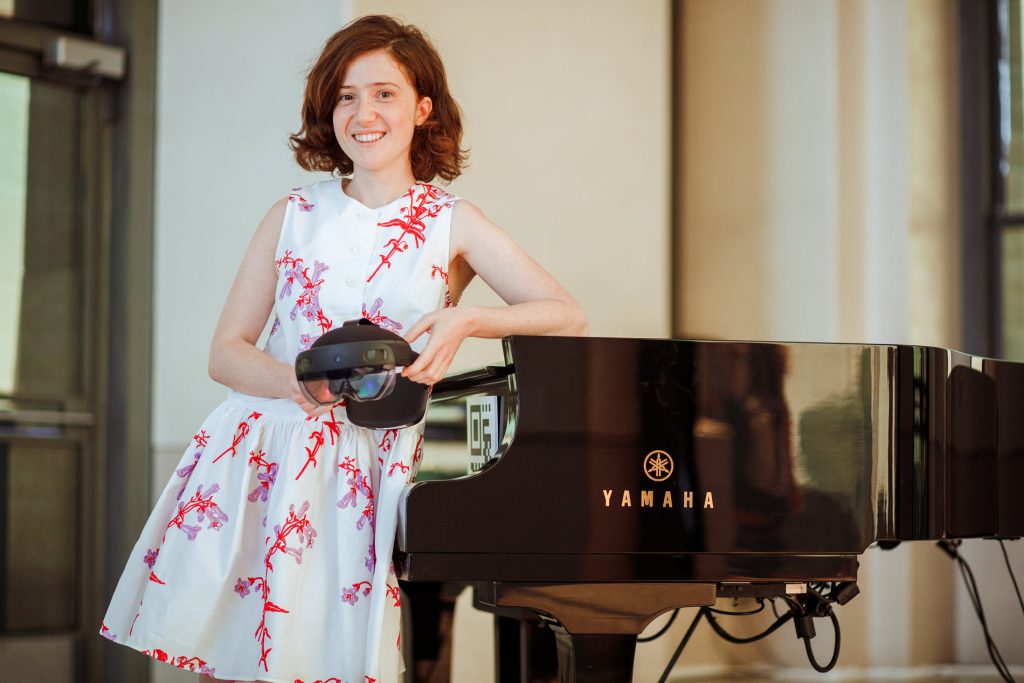
Q: What were your overall goals and mindset as an artist? Is there something you hope to show people through your art?
A: With art, I think there’s always some resistance to being exactly “one thing.” If it were just about saying one thing, we could write an essay about it. But I think a common thread in the work I’ve made is engagement with new technologies and how, maybe, they alter what it’s like to be human today. Some of my projects have taken technological trends and accelerated them to an extreme to reveal something.
In the case of “Dawn Chorus,” I’m using a technology — augmented reality — that’s more typically used in military or enterprise applications, where it’s not particularly meant to be a beautiful visual experience. In a sense it’s diverting this technology to something it wasn’t designed to do, which I think shows you something very beautiful and poetic.
Q: What do you hope people will get out of this piece?
A: It’s different from how you typically engage with either visual art or music. The piece we composed for this is three-and-a-half minutes long — and normally you never spend that long with an artwork. It’s [also] different from being at a concert, where you’re seated and not asked to engage with the music actively, as you do here. I want people to use that time to feel inspired and be taken out of their daily life. I want them to experience that moment of magic.
A video example of “Dawn Chorus” in action.
Q: How and when did you first have the idea for “Dawn Chorus”?
A: In 2018 I tried an augmented-reality headset and saw its potential as something really exciting for art, and I wanted to push its capabilities. After the initial inspiration, I knew I wanted to make it a musical piece and that a piano would be part of it. A piano is such a beautiful object and has such a presence in a space.
I first noodled around with some animation concepts that didn’t quite work technically. It took me a while to land on the idea of birds, but I knew right away it was perfect. Birds are linked to music, of course, and are small enough to see in the frame of an AR headset. It makes you feel like you’re wearing binoculars.
Then it was off to the races. We did our first demo of the piece in early 2020, and it was up for two weekends at the New Museum [in New York City] before everything was shut down.

Q: Why did you choose a Yamaha Disklavier as the piano to be used in this piece?
A: It’s an amazing piece of equipment. There was really no other option — there’s nothing like it on the market. Technologically, we needed an instrument that could be triggered via MIDI. But also, we needed an instrument that sounds beautiful musically, a true acoustic piano sound. This piece would not be the same with an electronic keyboard. We wanted that illusion that the music is being played by birds landing on the strings. That was only possible through the combination of an AR headset and the reproducing ability of the Disklavier.
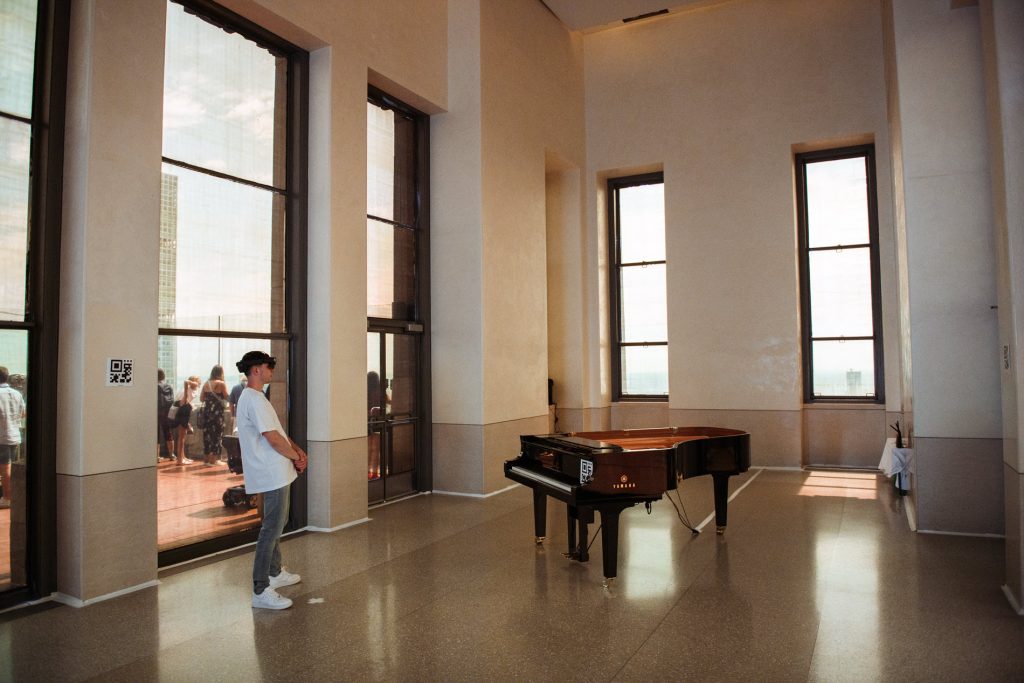
Q: What can you tell me about the music composed for this piece? I understand it was composed in part algorithmically, but with contributions from a talented human composer.
A: There were a few cooks in the kitchen. I wanted the music to evoke water, as if the piano is a fountain that the birds are playing in — light and fluttery, with the sound of birdcalls. We took fragments from composers like Liszt and Debussy and did a statistical analysis to generate phrases that were similar to phrases in those compositions. I’m not a composer myself, so this was kind of a “hack” to be able to generate phrases, and then play them back and listen and adjust. Sometimes we’d have to change keys and figure things out as we went along. We also brought in a composer, David Francois Moreau, who composes for dance quite a bit — which makes sense because this was kind of like choreography for these birds.
The soundscape is a mix of birdcalls and flute, with a hint of some electronic sounds as well. The inspiration for that was a phenomenon called the “electromagnetic dawn chorus,” which basically occurs when people misinterpret ambient electronic noise as birdcalls.
There’s a sense in the piece that this is music humans couldn’t play, because there are just so many notes. The idea was that this is a composition only birds can play.
Q: What were your musical influences growing up?
A: I started playing piano when I was four years old and eventually took classes at the Manhattan School of Music. I like to play Liszt and Chopin and Debussy — a little Rachmaninoff too. As a kid I liked playing Béla Bartók. I remember playing a piece called “Diary of a Fly” that was completely dissonant and so hard to memorize. Maybe that’s what primed me to want to use music in this way. The piece we composed for “Dawn Chorus” contains some dissonant elements, in combination with some more melodic elements.
Q: What about visual art? What are your influences there, and how do they come into play in “Dawn Chorus”?
A: I love the Rococo period of art, and there is something kind of “Rococo” about pianos in interiors. In a sense, this piece is like a contemporary Rococo, where I’m using natural forms and taking them to this exuberant extreme.
Q: What kind of feedback have you received on “Dawn Chorus”? Are there any observations that stand out to you?
A: One comment that I thought was spot-on came from a friend who said it was very “Fantasia.” It’s that use of music — amazing, iconic music — in combination with the visual animation. So that made perfect sense to me: It’s like Fantasia come to life!
Photos: Top of the Rock
For more information about Sara Meyohas and her latest works, click here.
Watch more of “Dawn Chorus” here.










